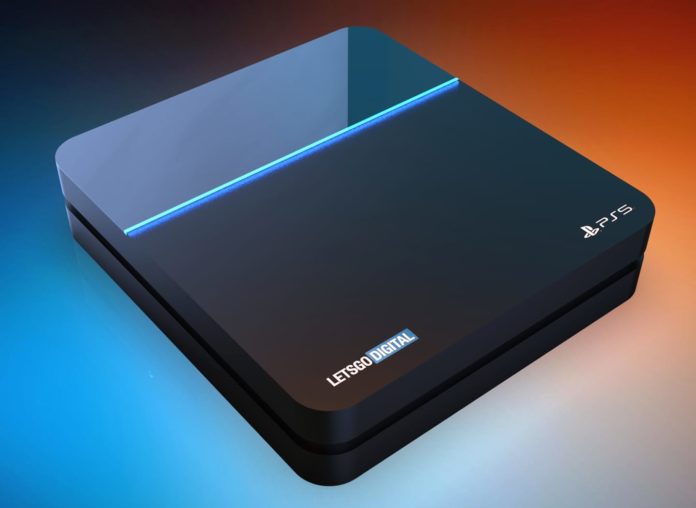The next-gen consoles have been making headlines quite frequently as of late. There have been numerous reports, from the CPU/GPU behind the platforms to backward compatibility for the PS5, as well as reported ray tracing support. The first confirmation has finally arrived from Mark Cerny, the lead system architect for the PlayStation 5 who recently in an interview revealed a lot about Sony’s upcoming console.

Cerny confirmed at long last that it’ll be AMD’s 7nm Zen2 cores and a custom Navi GPU that will be powering the PlayStation 5. The former will be an 8-core/16-thread chip equivalent to the soon expected Ryzen (3600?) desktop processor. As for the GPU, it’ll be a custom Navi part with hardware-based support for real-time ray tracing as well as 8K playback. He also talked about the PlayStation 5’s storage and said that they’ll be moving to SSDs this time around. He mentioned that the Devkits have “more raw bandwidth available than any current SSD available on the consumer market” which to be honest is highly unlikely, just like some of the other claims Cerny made.
Furthermore, the PS5 will have a dedicated soundcard or in fancy words, “a 3D audio chip” to improve the immersion and playing experience. A while back, we had heard rumors that the new console might support its predecessor’s titles, and that also has been confirmed. However, unsurprisingly, it’ll only have support for PS4 library and not the much older PS3 or PS2.
AMD CEO Lisa Su confirmed in a Tweet this morning that the Sony console will indeed be using team red’s hardware in the next round of the console race.
Related reading:
How much will the Sony PlayStation 5 Cost at Launch?
ASUS Showcases FX95DD Gaming Laptop Pairing AMD Ryzen 7 with NVIDIA GTX 1050
Our Opinion
Sony’s Mark Cerny made some very bold claims in this interview and there are a few things I’d like to point out. Firstly as for the CPU, yes the Zen2 processor should be quite capable but don’t expect it to be on par with the desktop variants which will be clocked much higher. The console parts tend to have tamer clocks to keep the power consumption and temperatures in check.
Secondly, the GPU. The AMD Radeon Vega architecture, we don’t know much about it. Only that it’ll be based on the same GCN architecture as the Radeon VII and the 7nm node. According to all the latest leaks, AMD might reveal the Navi 10 GPU at this year’s E3 with a very likely launch date of 7th July (7/07) to match with the new 7nm manufacturing process which by the AMD is the first one to adopt. The GPU is expected to be faster than the Vega 64, but slower than the Radeon VII. That means a GPU roughly on par with the GeForce RTX 2070, or perhaps a tad bit faster.

Thirdly, as far as ray tracing is concerned, let’s make this clear. Software-based support is quite easy to implement using modern APIs like Vulkan (or DX12 in case of the Xbox), but native hardware-level support like NVIDIA’s RTCores is another thing altogether. As it stands right now, I highly doubt AMD was able to come up with proper hardware support in such a short time.
Lastly, the move to SSD storage is very welcome but I expect Sony to use 3D TLC NAND which is comparatively cheaper than traditional MLC or SLC based flash memory. I’m not sure if there’ll be any sort of warranty coverage for drives but given recent developments, it’d be safe to say that TLC based NAND storage has come a long way and should be just fine for everyday usage.
Cerny also specifically mentioned that the devkits will have more “raw bandwidth” than any SSD on the market which I believe is again an exaggeration. There are many drives on the market that’ll be much faster than what Sony offers. Regardless, these aren’t the consoles we’re talking about but the devkits, so they have more flexibility over the total cost.

8K support and backward compatibility are all well and good, but keep in mind that this is 8K playback and not native 8K rendering we’re talking about. The latter though is a much-needed addition and Sony for the first time in a while, seems to have taken something from Microsoft’s playbook.
Getting excited over future hardware is a given, but make sure to see through what the marketing folks and this case, the “Lead architect” says about the specifications. The actual product is never as good as they make it seem and that has been proved time and again. It’s good to get a confirmation, but don’t take it as final unless it’s published on the official website.
Further reading:
EA Fixes Security Flaw in Origin that Exposed Users to Hackers



Why did you put lead architect in quotations?
Sony’s lead architect made some very bold claims yesterday. It’ll be interesting to see how much of it is actually true
Yo Areej! Do you think The 8K Playback is more likely being used for streaming games/movies primarily? I’m nowhere near an expert on any of this lol.
For movies, very likely. It’s unlikely that game streaming will be at 8K.